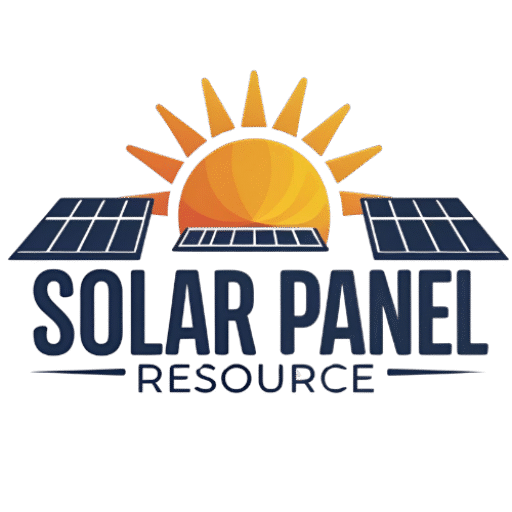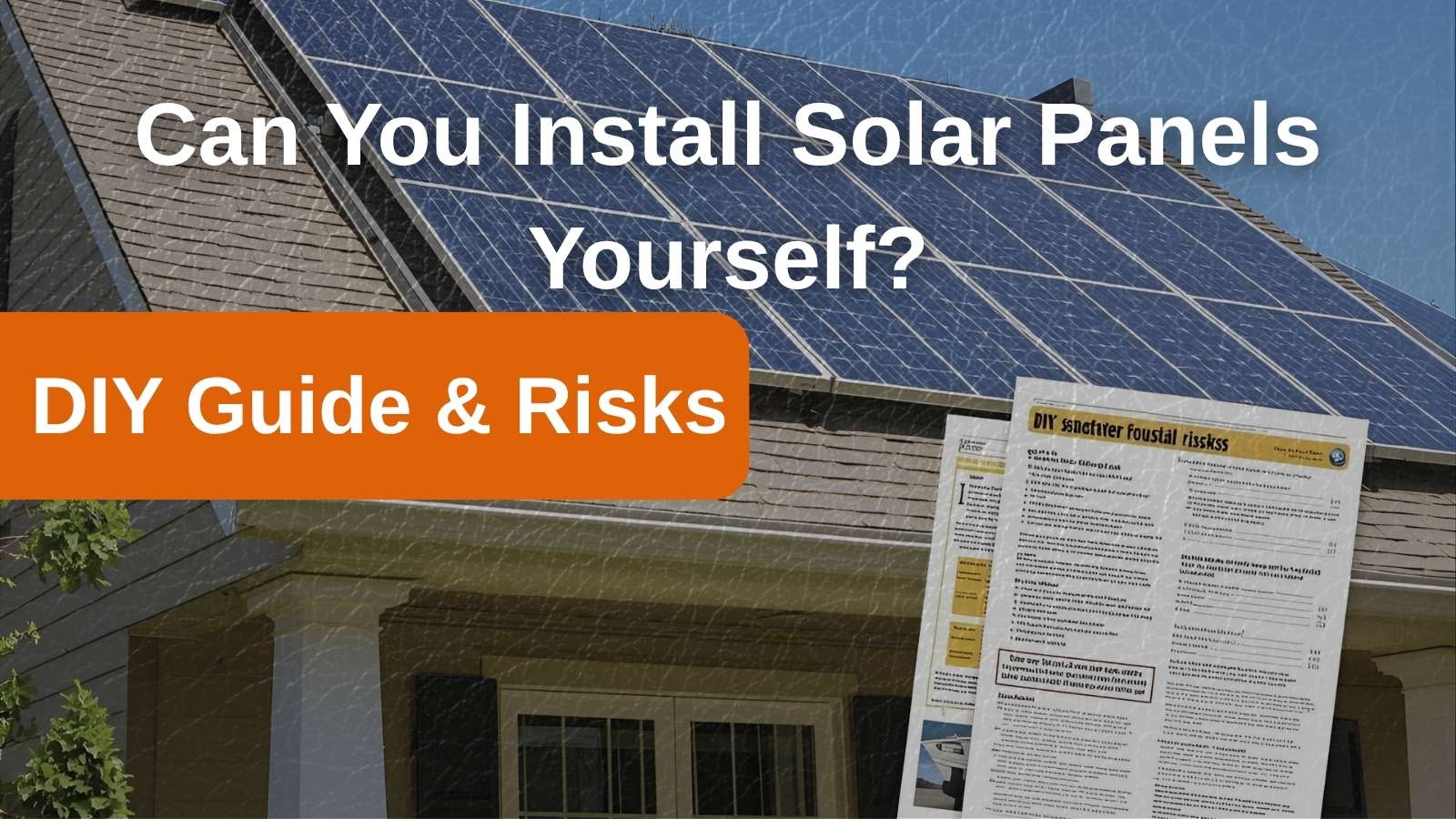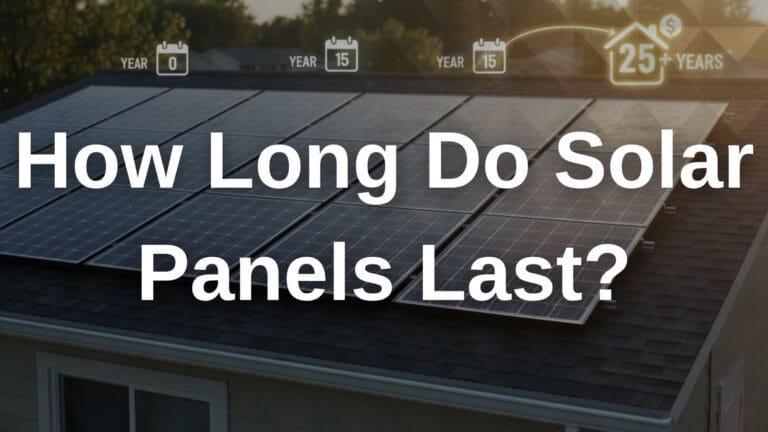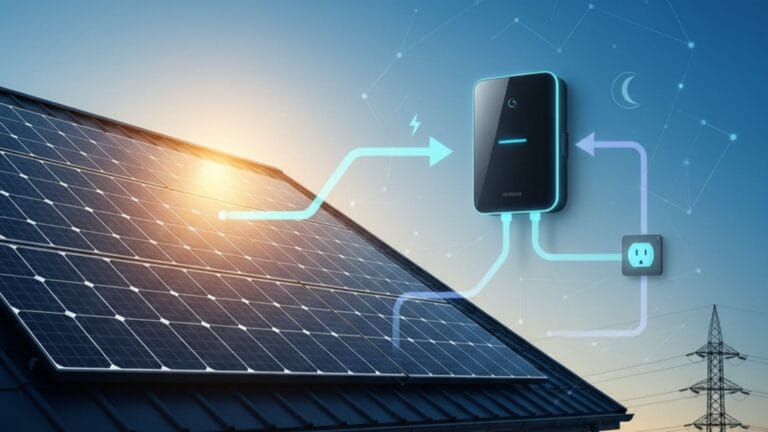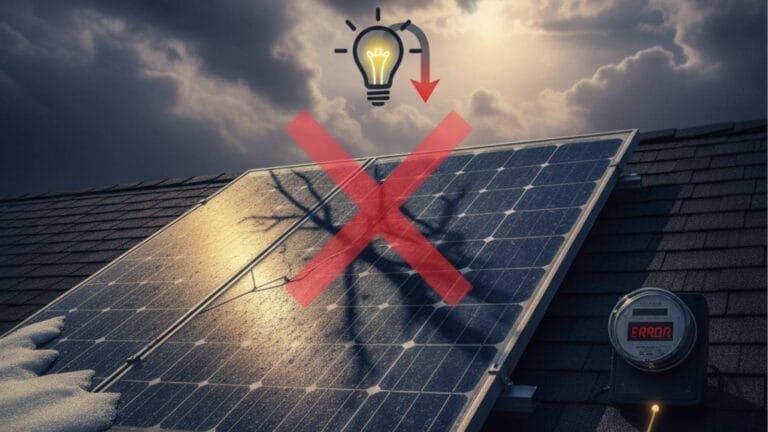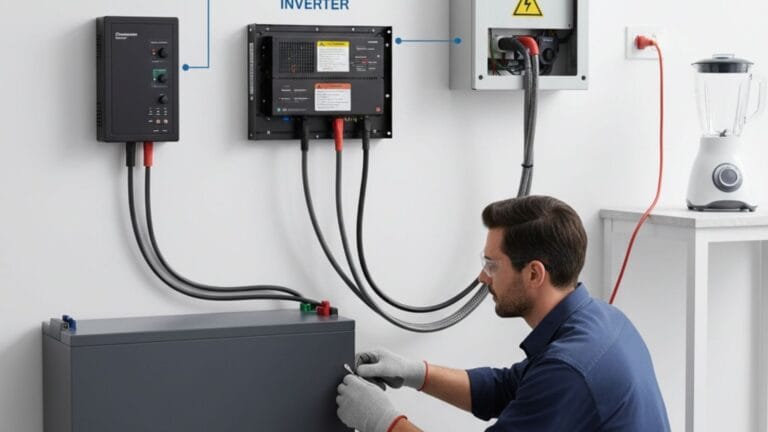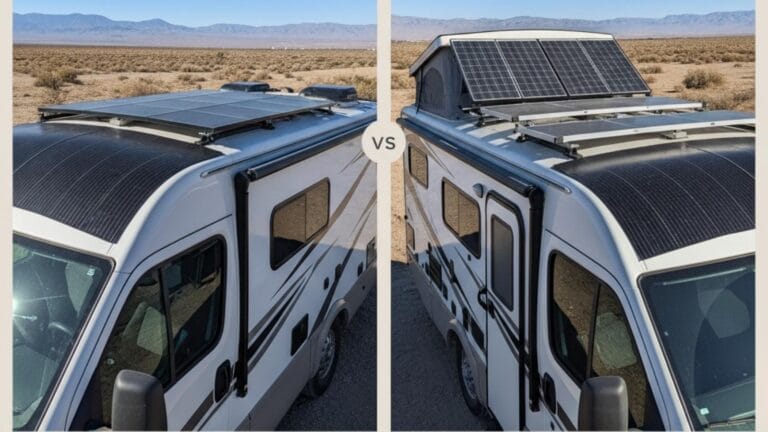Can You Install Solar Panels Yourself? DIY Guide & Risks
DIY solar kits can seem like a great way to save money and take control of your home’s energy future. While the idea of installing your own panels is appealing, the process is far more complex than a typical weekend project. This expert-level guide will walk you through the realities of a do-it-yourself solar installation, outlining the significant risks and highlighting the critical legal and electrical requirements that must be met. From navigating complex permits to ensuring your system is safe and efficient, we’ll help you understand what’s involved so you can make an informed decision.
Assessing DIY Solar Feasibility: Is It Legal and Practical?
Before purchasing a DIY solar kit, you must first determine if self-installation is legally permitted in your area. While it may be allowed, the process is highly regulated and requires strict adherence to building codes and utility requirements. The legal viability of a DIY project is dependent on your specific location and the willingness of local authorities to approve the work of an unlicensed individual.
1. Permit Requirements
Most jurisdictions require a variety of permits for grid-tied solar systems. These are essential for ensuring the safety and structural integrity of your installation.
- Building Permit: This permit ensures your roof can handle the added weight of the solar panels and that the mounting hardware complies with local building codes. It’s crucial for preventing structural damage.
- Electrical Permit: This is the most critical permit, as it ensures all wiring, components, and connections comply with the National Electrical Code (NEC). The NEC is a national standard that outlines strict safety rules for electrical installations, and it’s a non-negotiable requirement for any system connected to a home’s electrical panel.
While you may be able to handle the physical installation of the panels on the roof, many municipalities and states mandate that the electrical work, especially the connection to the main service panel, be completed by a licensed electrician for safety and liability reasons.
2. Utility Interconnection and Regulations
Even if you get local permits, you must also obtain permission from your utility company. Grid connection is a complex process that requires utility company approval and a signed net metering agreement. This process is often restricted to licensed and certified installers. The utility company must be sure that your system won’t pose a safety hazard to their workers or destabilize the grid. A DIY installer will have to submit detailed electrical diagrams and specifications for utility review, a step that is often too complex for someone without professional training.
3. Local Restrictions
Ultimately, the legality of a DIY solar installation comes down to local laws and insurance. Some regions prohibit DIY installations entirely due to liability concerns. Even if allowed, a self-installed system may not qualify for all state and local rebates or incentives. If something goes wrong, your homeowner’s insurance may not cover any damages if the system was not installed by a licensed professional. Therefore, consulting your local building department and utility company is the essential first step to determining if a DIY installation is even an option for you.
What Is Included in a DIY Solar Panel Kit?

DIY solar kits vary greatly, from basic setups for cabins and RVs to comprehensive, grid-tied systems for residential use. A typical residential DIY kit includes all the core components you’d expect in a professional installation, but the real challenge for homeowners is understanding how to properly use them.
What’s in a Residential DIY Kit?
A comprehensive DIY solar kit usually includes a variety of components that can be broken down into three main categories:
- Energy Collection: The foundation of the kit is the solar panels, typically high-efficiency monocrystalline panels. The kit also includes the mounting hardware and rails needed to securely attach the panels to your roof.
- Energy Conversion & Safety: This is the most complex part of the system. The kit will contain an inverter—either a single string inverter, individual microinverters for each panel, or a hybrid model if a battery is included. You’ll also get the necessary DC and AC wiring, connectors, and junction boxes. Importantly, the kit will include safety components like rapid shutdown devices (a requirement under the National Electrical Code) and grounding equipment.
- Support and Documentation: Some vendors offer design assistance and permitting packages, while others provide little more than the components. These kits often include a simplified one-line diagram and basic installation instructions.
The Missing Piece: Professional Expertise
While a DIY kit may contain all the physical parts, it often lacks the crucial professional expertise that a certified installer provides. This is especially true for grid-tied systems.
- Permitting and Legal Compliance: A professional installer handles all the complex paperwork for you, including structural and electrical permits, and ensures the installation meets all local codes.
- Utility Coordination: The installer manages the utility interconnection agreement and obtains permission to operate (PTO), which is a critical step for grid-tied systems.
- Expert Integration: Integrating a solar system with your home’s electrical panel is a precise, high-stakes task that requires a licensed electrician. While a DIY kit provides the wiring, it doesn’t provide the knowledge or professional certification needed to safely connect the system and ensure it won’t void your home insurance or create a fire risk.
Ultimately, a DIY kit can be a good option for an off-grid cabin or a small RV system, but for a residential grid-tied setup, the legal and electrical complexities are significant.
Electrical and Structural Skills Required
DIY solar installation requires advanced knowledge in electrical wiring, roofing, and structural load calculations. Errors in any of these domains can lead to serious hazards or failed inspections. Ultimately, a successful DIY installation is less about physical labor and more about having the expertise to navigate these technical complexities.
1. Electrical Hazards and System Integrity
The most significant risks of a DIY installation are electrical. A solar panel system is a high-voltage electrical circuit, and an error in the design or wiring can lead to life-threatening hazards.
- Improper Wiring: Incorrect wire sizing can lead to overheating and potential fires, while poor connections can result in arc faults. According to the North American Board of Certified Energy Practitioners (NABCEP), improper wiring and grounding are among the most common causes of system underperformance and safety violations.
- Lack of Grounding: Proper grounding is essential for both safety and system performance. An ungrounded system can pose a serious shock risk and can fail to protect your equipment from lightning strikes or power surges.
2. Roofing and Structural Risks
The panels on your roof are a permanent fixture, and their installation must be done with precision to avoid long-term damage to your home.
- Roof Penetrations: A typical solar installation requires dozens of holes in your roof to secure the mounting hardware. These holes must be properly sealed and flashed to prevent leaks and water damage. An inexperienced installer can easily compromise the roof’s integrity, leading to costly repairs down the line.
- Structural Load: Solar panels are heavy, and the added weight must be considered. An expert installer performs a structural load calculation to ensure your roof can safely handle the extra weight, especially in areas with heavy snow loads or high winds.
3. Sizing, Layout, and Performance Issues
Even if your DIY system is safe, it may not perform as efficiently as a professional installation.
System and Component Mismatch: DIYers may not realize that not all components are compatible. Mismatching panels and inverters or using improper wire gauges can lead to system inefficiencies and component failures, which are not typically covered by a manufacturer’s warranty if the system was not installed by a certified professional.
Suboptimal Performance: A professional installer considers factors like azimuth (the direction the panels face), tilt angle, and string configuration to maximize your energy output throughout the year. Without this knowledge, you can end up with a system that underperforms, leading to a much longer payback period and thousands of dollars in lost savings.
Common Myths About DIY Solar Installations
Numerous misconceptions circulate online regarding the ease and economics of self-installed solar systems. Clarifying these myths is essential for informed decision-making, as what seems like a simple project on the surface can quickly become a costly and dangerous undertaking.
Myth: “Installing solar panels is just like assembling IKEA furniture.”
Fact: This couldn’t be further from the truth. A residential solar installation is a complex construction and electrical project with serious safety risks. It involves precise structural engineering to ensure your roof can handle the weight of the panels, and advanced electrical work to connect a high-voltage system to your home’s main electrical panel. Without a thorough understanding of the National Electrical Code (NEC), wire sizing, and grounding, you risk creating a fire hazard or electrocution risk. The system must also be designed for optimal performance, which requires knowledge of azimuth, tilt angles, and shading.
Myth: “DIY solar saves 50% or more.”
Fact: While you do eliminate professional labor costs—which can range from 10-20% of the total project cost—the “savings” are often offset by other factors. A professional installer buys components at wholesale prices and has specialized tools that would be expensive for a single-use project. More importantly, DIY installers risk significant costs from failed inspections, rework due to code violations, and potential damage to their home. The time investment for a DIY project is also substantial, often stretching over weeks or months, as you navigate design, permitting, and troubleshooting. The true “net savings” can be far less than anticipated, and in some cases, the project may even end up being more expensive than a professional installation.
Myth: “You don’t need permits for small solar systems.”
Fact: This is a dangerous misconception. Even small grid-tied systems require multiple permits and inspections. A project that fails to meet code compliance cannot legally be connected to the utility grid. These permits are in place for your safety and the safety of the utility company’s workers. They ensure your roof can handle the load, the wiring is correct, and the system won’t pose a fire risk. Expert sources like the Solar Energy Industries Association (SEIA) recommend that only off-grid systems for non-permanent structures (like RVs or sheds) be considered for DIY installation by non-professionals. For any system connected to your home or the grid, professional installation is the safest and most reliable route.
Step-by-Step Guide to a DIY Solar Panel Installation

For those with the necessary expertise and legal clearance, a DIY solar installation can be a rewarding project. However, the process is far from simple and requires a methodical approach to ensure safety and performance. This guide outlines the key steps, highlighting the critical areas where expertise is non-negotiable.
The Technical Journey: From Roof to Grid
- Site Survey & System Design: This foundational step determines your system’s efficiency. You must accurately measure roof dimensions, perform a detailed shading analysis to identify obstructions, and, most critically, verify your roof’s structural load capacity. Incorrect calculations in this phase can lead to underperformance or, in extreme cases, roof damage.
- Mounting Rails & Panel Installation: This is where the physical work begins. Proper alignment and secure fastening of the mounting rails are crucial. Every hole drilled into your roof must be carefully sealed to prevent future leaks. Panels must then be mounted according to the manufacturer’s torque specifications, ensuring they are secure against high winds and weather.
- Electrical Wiring & Grounding: This is the most dangerous and technically demanding part of the process. You must have a deep understanding of the National Electrical Code (NEC) to correctly size wires, install conduits, and ensure all components are properly grounded. Improper grounding or poor wiring connections are common causes of system underperformance and, more seriously, can lead to arc faults or fires.
The Bureaucratic Gauntlet: Permits and Final Approval
- Obtaining Permits: A DIY installer must act as a project manager, submitting detailed structural and electrical diagrams to the local authorities. This can be a time-consuming and frustrating process, as any small error in the documentation can lead to significant delays and resubmissions.
- Final Inspection & Utility Interconnection: After the physical work is complete, your system must pass a final inspection by local building and electrical authorities. This is where your work is put to the ultimate test. Only after a successful inspection and the utility’s approval can you receive Permission to Operate (PTO). Without this official sign-off, your system cannot legally be connected to the grid.
The Finish Line: Commissioning and Monitoring
Monitoring: The final step is to activate your monitoring tools to track your system’s performance. Consistent monitoring is your only way to catch any issues early and ensure your system is generating the savings you expected.
Commissioning: Once you have PTO, you can activate your system. This involves a final check of all components, ensuring the inverter is communicating correctly, and verifying that the system is producing the expected power. Many professional installers provide a handover document with a final commissioning report, but a DIYer must perform these final checks on their own.
What Are the Risks of Installing Solar Panels Yourself?
DIY solar projects may seem appealing, but they come with significant technical, financial, and legal risks that homeowners must carefully evaluate. The “savings” of a DIY installation are often outweighed by hidden costs and potential liabilities that a professional installer is equipped to handle.
1. Safety Hazards: The Most Significant Risk
This is the most critical area of concern. A solar panel system generates high-voltage direct current (DC) electricity that can be lethal. Without a deep understanding of electrical systems, you face serious risks of electrocution, arc faults, and fire. Working on a roof also presents a significant fall hazard, especially with heavy, bulky panels. A single mistake—such as improper wire sizing or inadequate grounding—can lead to catastrophic consequences that are not worth the perceived savings.
2. Legal and Financial Pitfalls
The complexities of solar installation extend far beyond the technical work. Neglecting regulatory and financial requirements can lead to costly problems.
- Code Violations: Your system must comply with the National Electrical Code (NEC) and local building codes. If your DIY installation fails inspection, you will be required to hire a professional to correct the errors, leading to additional costs and delays.
- Voided Warranties: Many panel and inverter manufacturers, including top-tier brands, have strict warranty requirements that stipulate installation must be performed by a certified professional. A DIY installation can void these warranties, leaving you to pay for any component failures out of pocket.
- Property and Insurance Issues: A non-compliant system can complicate property sales and may not be covered by your homeowner’s insurance in case of damage or a fire.
- Loss of Incentives: Many state rebates, tax credits, and utility interconnection programs require documentation from a licensed installer to prove code compliance and eligibility. A DIY project may not qualify for these valuable incentives, eliminating a major part of the financial benefit.
3. Long-Term Performance and Reliability
According to the National Renewable Energy Laboratory (NREL), professionally installed systems not only outperform their DIY counterparts but also yield greater long-term reliability. A professional installer has the expertise to optimize your system’s design for maximum energy production and to ensure proper commissioning and maintenance protocols are established. This expertise minimizes the risk of system underperformance or premature failure, ensuring your investment pays off for decades to come.
When Is DIY Solar a Reasonable Option?
The decision to install solar panels yourself is a major one, and while the risks for a standard grid-tied home are often too high for most homeowners, there are limited cases where a DIY approach can be both viable and rewarding. The key distinction lies in the system’s purpose and its connection to the utility grid.
Where DIY Solar Is a Better Fit
- Off-Grid Cabins or Remote Buildings: A self-contained, off-grid solar system is a different league from a grid-tied one. Because it’s not connected to the public utility, you can often bypass the complex and restrictive interconnection agreements and inspections required for grid-tied systems. For a remote cabin or a shed, the focus is on powering specific appliances, making the design and installation process far less complicated.
- Small-Scale Applications: DIY is also an excellent option for supplemental power needs. Think solar water pumping, lighting for a detached garage, or charging a battery bank for a boat or RV. These systems are low-voltage, use pre-assembled kits, and don’t involve the life-threatening risks of wiring into a home’s main electrical panel.
- For the Pros: Of course, for professionals in the electrical trades, a DIY installation is a logical choice. These individuals have the necessary permits, licenses, and experience to safely and legally install a system. They understand the National Electrical Code (NEC), structural load calculations, and the permitting process, which are the main barriers for most homeowners.
The Risk of a Grid-Tied DIY Project
For a standard grid-tied residential system, the combination of legal complexity, safety concerns, and financial implications makes DIY a high-risk choice for most. The interconnected nature of a grid-tied system means any error in wiring or installation can have severe consequences for your home, your family, and even utility workers. It’s a job that demands expertise in multiple domains, and for the vast majority of homeowners, the peace of mind and long-term reliability of a professional installation are well worth the investment.
Should You Install Solar Panels Yourself?
Installing solar panels yourself is technically possible but carries significant risks. While it may seem like a way to save on labor costs, the complexities of a grid-tied system, combined with safety hazards and regulatory hurdles, make it a high-risk choice for most homeowners. A professional installation is the safer and more reliable route, ensuring your system is compliant, protected, and optimized for performance.
The Technical & Safety Risks of a DIY Installation
The most significant risks of a DIY installation are technical and safety-related. A solar system is a sophisticated electrical project, not a simple DIY assembly.
- Electrical Hazards: Solar panels produce high-voltage DC electricity that can be lethal. Without proper training in electrical wiring, grounding, and safety protocols, you face a serious risk of electrocution or arc faults, which can lead to fires.
- Roof Integrity: A professional installer performs a structural analysis to ensure your roof can safely handle the weight of the panels. Improperly secured mounts or poorly sealed penetrations can lead to leaks and structural damage, voiding your homeowner’s insurance.
- Underperformance: An amateur design can result in a system that doesn’t perform as expected. Factors like incorrect panel orientation, inadequate wire sizing, or suboptimal string configuration can reduce your energy output and extend your payback period by years.
The Importance of Professional Expertise and Compliance
A professional installer does more than just mount panels. They act as a project manager, navigating the complex regulatory landscape to ensure your system is safe and legal.
- Code Compliance & Permitting: Professional installers are experts in the National Electrical Code (NEC) and local building codes. They handle all the required permits—including electrical, structural, and zoning—and ensure your system passes final inspections. A non-compliant system cannot legally be connected to the grid and could require costly rework.
- Utility Interconnection: A key step for grid-tied systems is obtaining a Permission to Operate (PTO) from your utility company. Your installer manages this complex process, submitting detailed documentation to ensure your system can safely and legally connect to the grid and take advantage of net metering.
Financial Protection and Long-Term Value
A professional installation protects your investment by ensuring eligibility for incentives and protecting your equipment.
Access to Incentives: Many state rebates, tax credits, and utility incentives require a licensed installation to qualify. For instance, the federal Investment Tax Credit (ITC) is unlocked by a compliant, professionally installed system, which can reduce your total cost by 30%.
Warranty Protection: Most panel and inverter manufacturers, including top-tier brands, have strict warranty requirements that are only honored if the system is installed by a certified professional. A DIY installation can void these warranties, leaving you to pay for any future repairs or component replacements out of pocket.
You can get detailed information about solar panels by reviewing all the articles on our blog.

Solar Energy Enthusiast & Renewable Energy Researcher
Vural’s journey into solar energy began four years ago, driven by frequent power outages and high electricity bills at his own home. He has since gained hands-on experience with both personal and commercial solar projects. At solarpanelresource.com, Vural shares his real-world insights and in-depth research to guide homeowners and business owners on their own path to energy independence.
